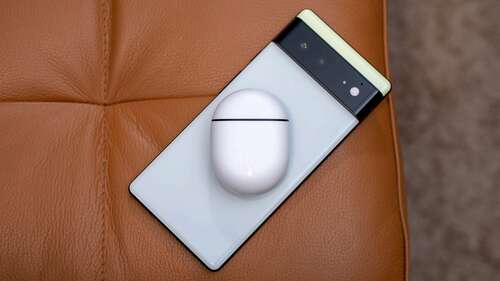
Key Takeaways
- Reverse wireless charging allows you to power other devices with your phone, but it’s not a fast process.
- Make sure both devices have wireless charging capabilities, and check your phone settings to enable this feature.
- It can be a convenient backup power source, especially for small devices like earbuds, but don’t rely on it for fast charging.
Wireless charging is pretty straightforward—it’s charging without a wire. But reverse wireless charging, what’s that?
This is a feature that has made its way into many premium phones, and it goes by many names: “battery share,” “power sharing,” and even “Wireless PowerShare.” Regardless of the name, is this a must-have feature on your next phone?
How Reverse Wireless Charging Works
Wireless charging, also known as inductive charging, is the ability to charge a device using electromagnetic induction via two metal coils. In the case of smartphones, one coil is in the wireless charger, and the other is in the back of your phone.
Reverse wireless charging enables your phone to send power back the same way it came in, so that you can charge another device. You do so by placing the second device, such as another phone or a pair of battery-powered earbuds, onto the back of your phone. This is one of the hidden ways to wireless charge a phone.
Both devices must have a metal coil, or put another way, both devices must be capable of wireless charging. You cannot use reverse wireless charging to power a device that must be plugged in to charge.
How to Use Reverse Wireless Charging
There’s a good chance you need to manually enable reverse wireless charging before you can plop another phone onto the back of yours.
How to enable this feature varies by device, with different manufacturers using different names for the functionality. In most cases, you can find the feature by looking under Settings > Battery.
On a Google Pixel phone, go to Settings > Battery > Battery Share and hit the toggle.
On the Motorola Edge+, by contrast, this feature is found under the name “Power Sharing.” You enable the feature by going to Settings > Battery > Power Sharing.
Meanwhile, reverse wireless charging is known as Wireless PowerShare on a Samsung Galaxy device.
On an iPhone 15 or later, look for a toggle to enable reverse wireless charging after heading to Settings > Battery > Wireless Charging.
Regardless of which phone you use, the feature performs similarly. Turn your phone face down and place another phone (lying face up) on top of your phone. You want their backs to touch the same sweet spot you must hit in order for wireless charging to kick in on a Qi wireless charging pad. The video below by Samsung represents the general process regardless of brand.
Reverse wireless charging won’t work if your source phone’s battery drops below a certain level. After all, it’s rarely desirable to fully drain one phone in order to power another.
A Pixel lets you toggle this battery level, but other manufacturers may not give you a say on what level of charge you need to enable reverse wireless charging.
How Fast Is Reverse Wireless Charging?
In most cases, wireless charging doesn’t transfer energy as quickly as a direct cable connection can, and reverse wireless charging is no exception. When you drop another device onto the back of your phone, expect the process to take a while.
Reverse wireless charging speeds are generally limited to 5W. A 60W charger can put half a day’s worth of energy back into a phone in minutes. By contrast, a half-hour of charging at 5W can still leave you wanting. Even a regular wireless charging pad can provide speeds several times faster.
Such slow speeds, combined with the drain on your source battery, mean reverse wireless charging is better suited as a back-up form of power. It can get you by in a pinch, but it won’t serve as a primary way most people charge their devices.
Except for this—you can sometimes reverse wireless charge one device, like a pair of earbuds, while your primary device is plugged in. This essentially turns your phone into a wireless charging pad. Considering how small earbud batteries are, reverse wireless charging is not a bad way to keep both devices topped up at the same time, and it means you only need a single charging cable.

